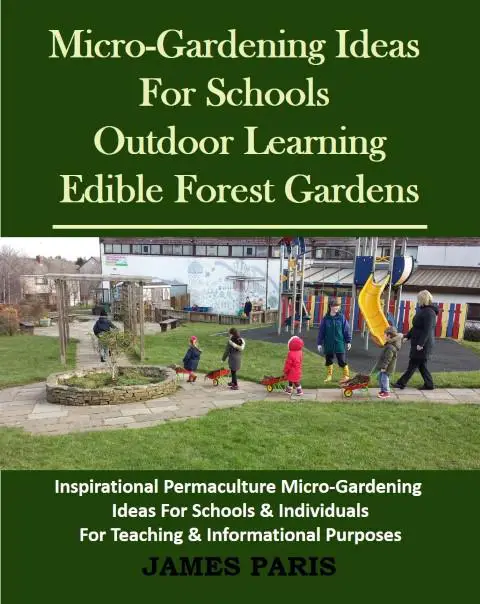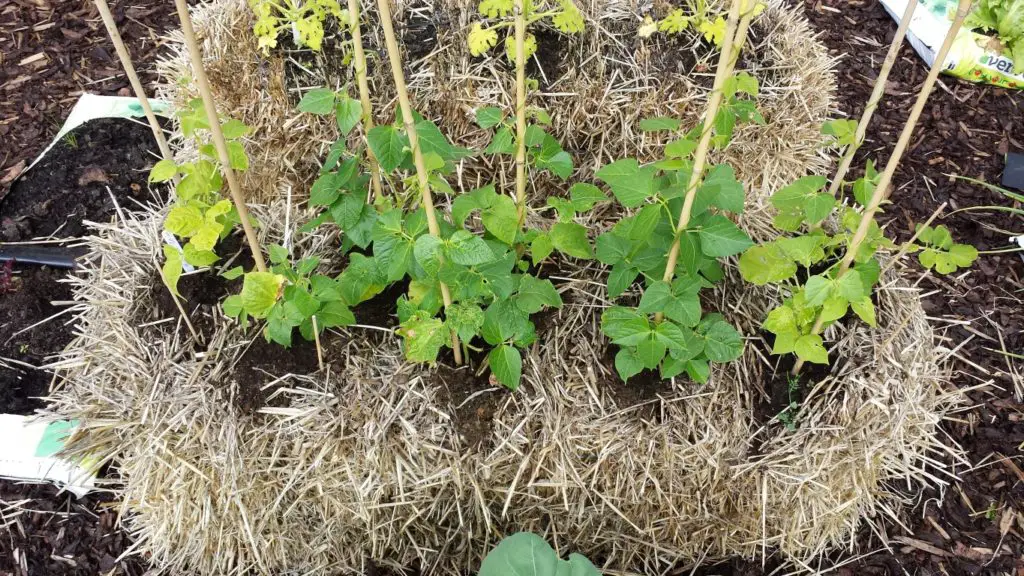
With no-dig gardening becoming increasingly popular especially with the urban dwellers, growing vegetables in straw bales has also gained in popularity.
Here are ten great reasons to consider breaking from tradition and growing vegetables in straw bales.
1. The SBG is arguably more productive when it comes to crop yield, and the amount of space required to produce amazing crops.
2. Far easier to operate and maintain than a traditional vegetable garden. This is because apart from the initial planting process, there is absolutely no digging involved with SBG.
3. Weed-free gardening with no need to spend hours hoeing between rows of vegetables to remove weeds. This is mainly due to the fact that you are using a ‘clean’ growing medium free of weed seeds. (Check the article comparing straw with Hay).
4. Wheelchair friendly gardening, similar to Raised Beds , Growing in straw
, Growing in straw means that the garden area is accessible directly from the wheelchair, with regard to height and space between the beds for mobility and ease of access.
means that the garden area is accessible directly from the wheelchair, with regard to height and space between the beds for mobility and ease of access.
5. Longer growing seasons are enjoyed by this concept as the growing medium is raised from the ground, and warms quicker that traditional beds. The ‘cooking’ process also ensures that the bed is warmer, which ensures an earlier planting.
6. Pests and bugs are far easier to control as the growing area is already raised up from the ground, and is easier to cover and control pests through the use of nets and companion planting techniques.
7. Back-ache free gardening can be a huge benefit of all Raised Bed systems – of which the SBG is also a member.
The simple fact that you are not constantly bending over double to maintain your vegetables, means that back-ache is no longer such a big issue!
8. Bad soil and sloping ground is no longer an issue with these systems, all of which can be easily adapted to suit almost any environment.
9. Cheaper to operate than a Raised Bed system as there is little or no compost needed. The SB itself produces most of the growing medium required as it decomposes.
10. SB Gardens are a great talking point! The fact that the concept is largely unknown to many people, means that gardeners are intensely interested when you show them your Straw Bale garden 🙂
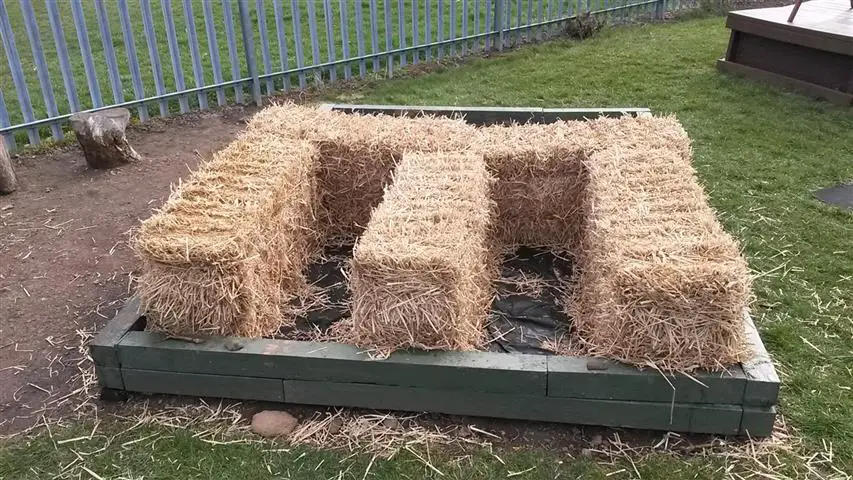
Why Straw and Not Hay Bales
It has to be said that there is some confusion regarding the difference between straw bales and Hay bales. Many folks seem to think that they are just the same thing – they are not.
Hay bales are made from cut grass and contain a variety of grass and wildflowers such as clover. This mix is usually grown and harvested in order to feed animal stock over long cold winters.
Sometimes this hay is mixed with molasses to give cows a better milk yield over winter. When you see round bales in fields covered over with black or green polythene, this is to seal the nutrients in with the hay and cause the material to ferment in a sealed environment.
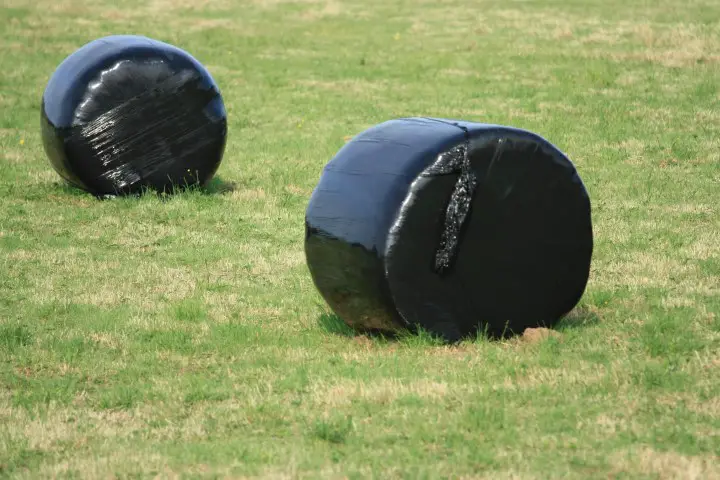
Hay is rich in minerals, particularly nitrogen . It is this nitrogen that feeds the microbes that in turn heat the wet hay as it does what microbes do – dance around in excitement amongst the rich nitrogen content of the wet hay!
. It is this nitrogen that feeds the microbes that in turn heat the wet hay as it does what microbes do – dance around in excitement amongst the rich nitrogen content of the wet hay!
This heating process when hay is subjected to water, is what can potentially cause a fire that burns down the hay loft if it has a leaking roof!
So a part of the reason that hay is not used is that it is so full of nitrogen that it can heat up when watered, and burn out the plants at the root!
Another reason however is that hay is full of seeds – depending on when the grass was cut. In other words. If the grass was cut before the seeds formed then you will have less seeds than if it is cut later in its development.
For reasons why to consider Hay bale gardening over Straw, check out this post .
.
Using Straw Bales For Growing Veggies
Meanwhile getting back to Straw rather than Hay. Straw is the by-product of serial crops such as barley or wheat. It is organically dead and has little to no nutrients. As such it is classed as ‘brown’ material which can be used in a compost heap for instance.
In order to grow anything in a straw bale, the bale has first to be conditioned or primed to create the perfect growing medium for vegetables.
This conditioning of straw bales for growing vegetables and other food crops is best explained in this post.
What Vegetables Can You Grow In Straw Bales?
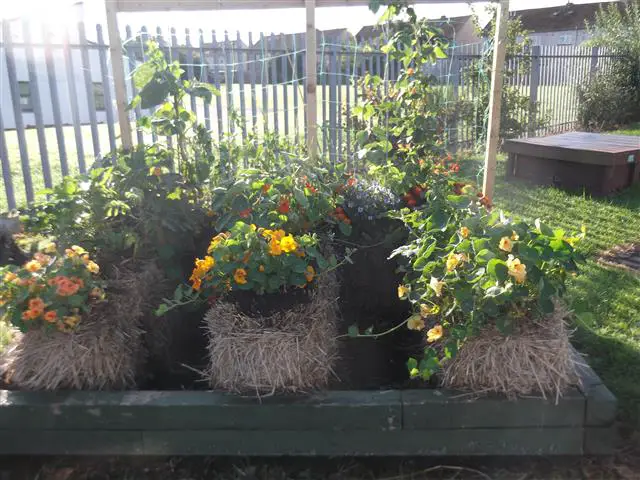
There is virtually no limit as to the types of vegetables or even fruit that you can grow in a Straw Bale Garden. With a little enginuity and planning. Whether you are growing onion sets or carrots the basic proceedure is the same once the bale has been conditioned and is ready to go.
I have grow a variety of vegetables including onions, carrots, cabbage, potatoes, leeks, tomato plants, and with a simple frame attached to the sides I have grown peas and beans.
In fact this picture shows a straw bale garden I set up for the local childrens nursery – and they absolutely loved it! The nasturtiums are a great companion plant and they are edible and look great in a salad.
and they are edible and look great in a salad.
My wife is a teacher with the nursery and she was able to give me updates and call me in when needed to help with the growing and harvesting.
At the end of the second season we even showed the kids (and their parents) how they could use the depleted bales for composting.

